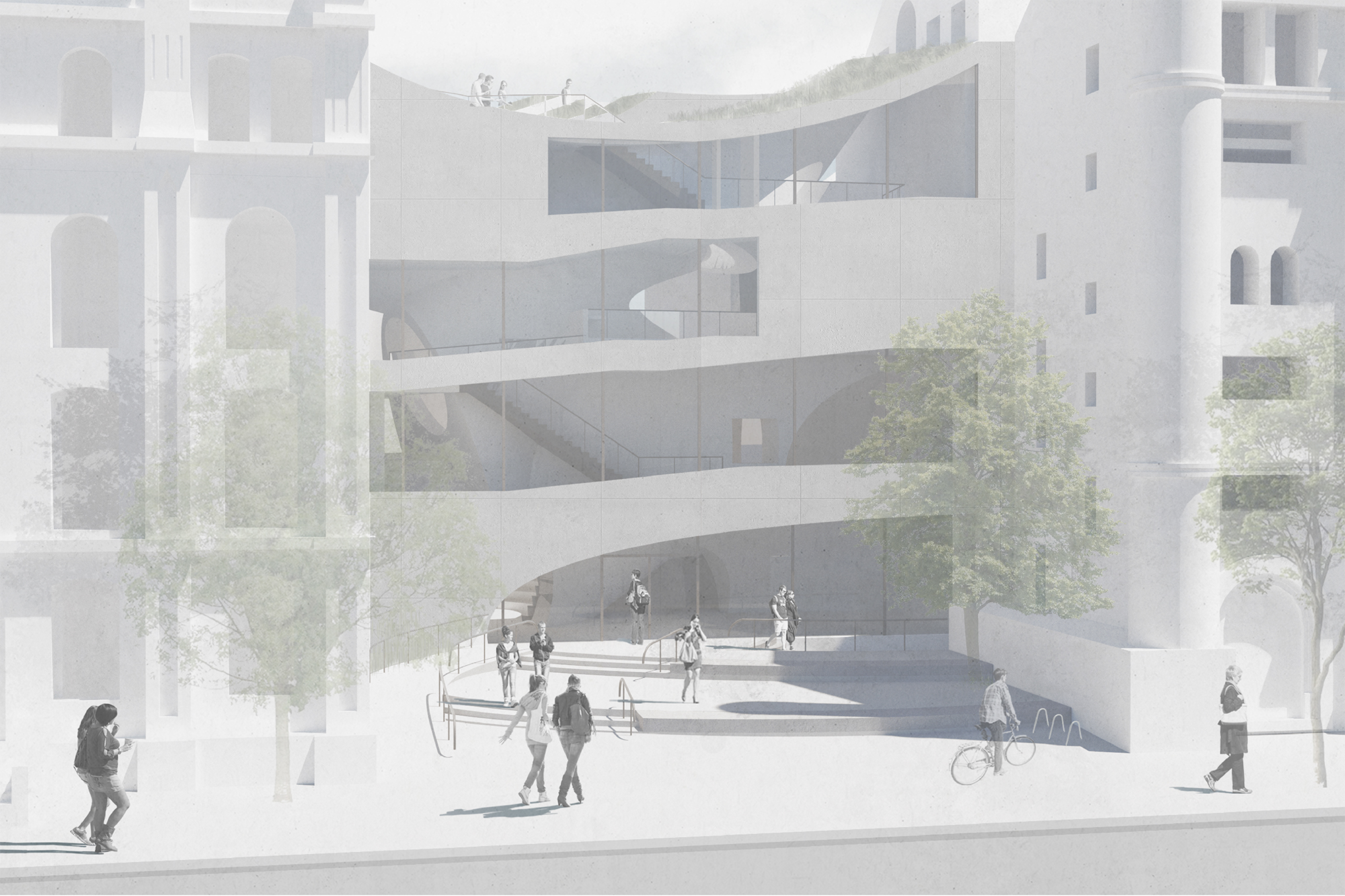
Elva Hu, "The Lightness"
In Architecture Studio 1, first-year Master of Architecture students sharpened their spatial thinking skills by each designing an addition for a confined space between two adjacent academic buildings. The studio began with a pair of design exercises.
In the first exercise, students were asked to create a piece of an "exquisite corpse" — a small, cubic space that would connect with similar spaces created by their classmates. Elva approached the assignment by exploring the possibility of using a two-dimensional pattern to create a three-dimensional architectural form. By making folds in a flat shape, she produced a three-level gathering space.
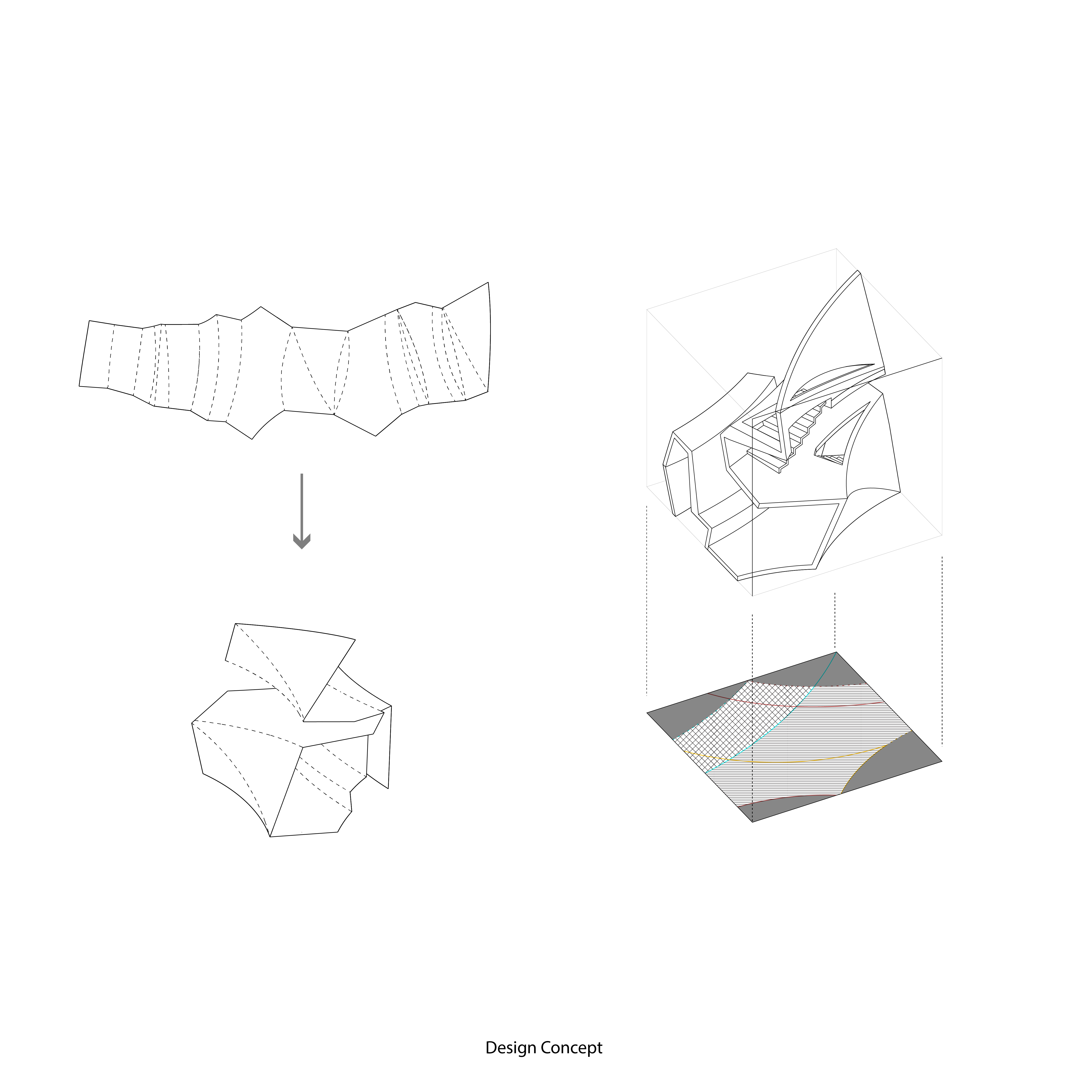
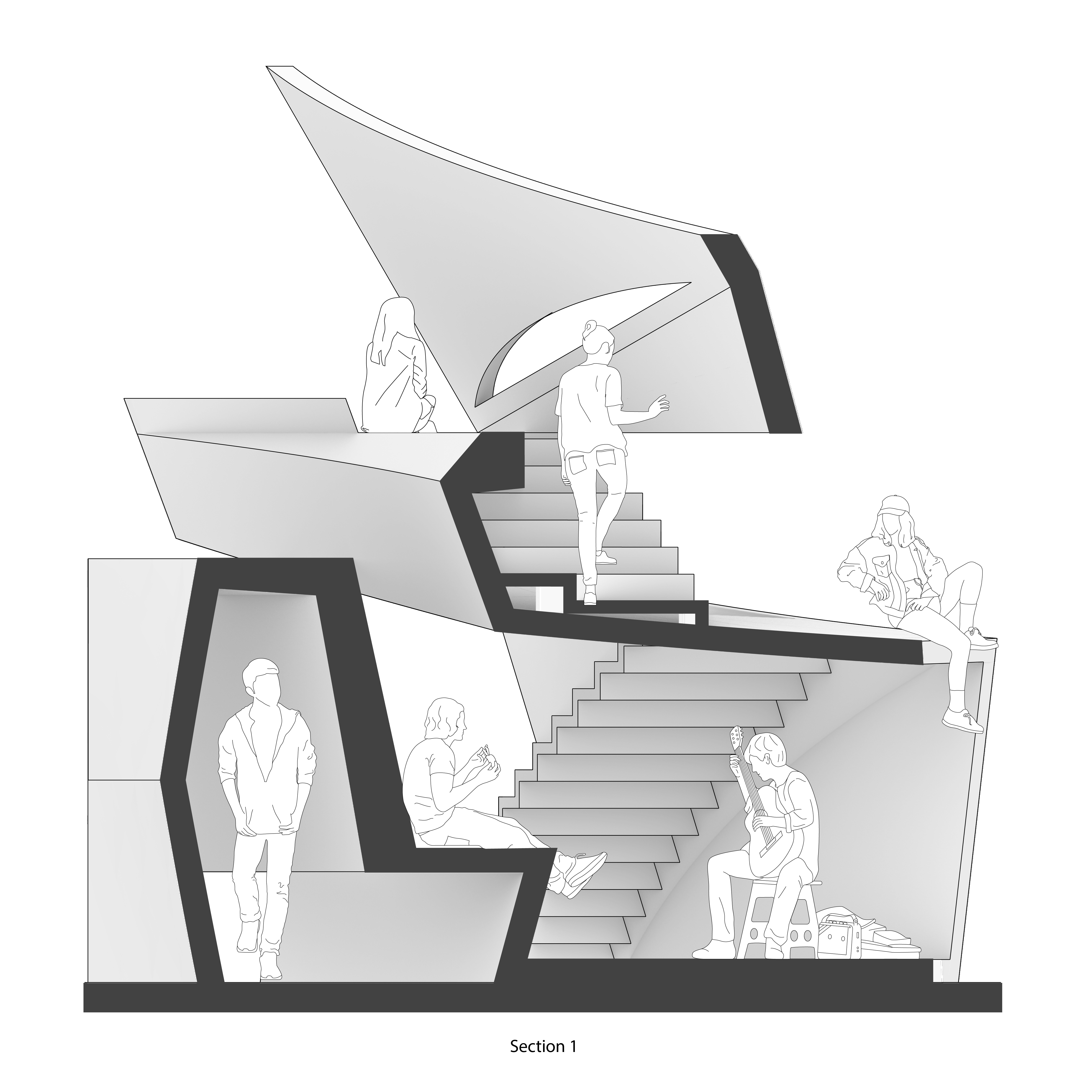
Top: Elva's design concept for the studio's first assignment. Bottom: A section view of the completed design.
The studio's second exercise called upon students to expand upon their designs from the first assignment. Elva focused on creating circulation by finding inventive ways of introducing ramps and stairs. "By walking throughout the 'trail,' one can feel the transitions between one space and the other, while feeling the differences between exterior and interior space," she says. At the centre of the design is a conic void.
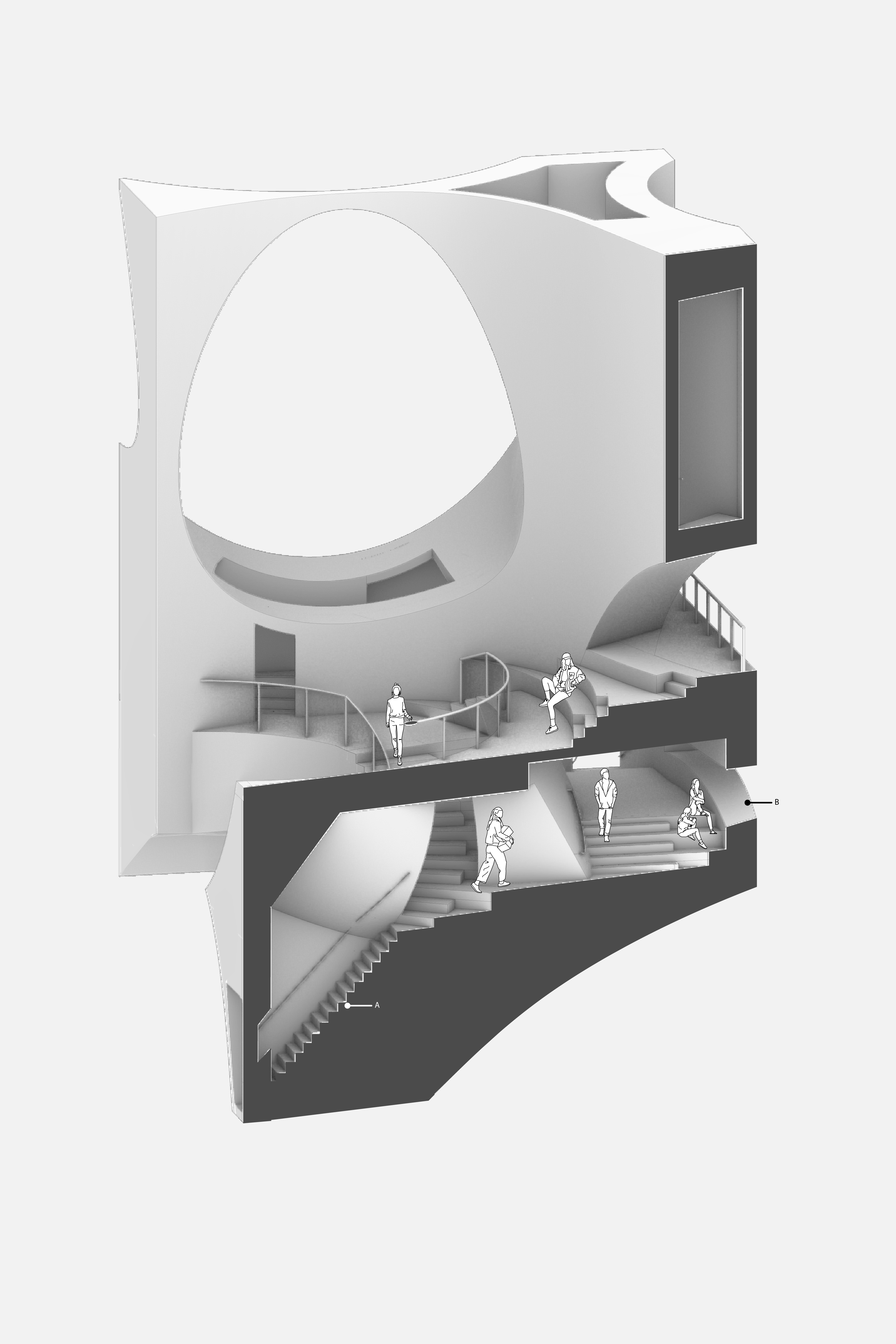
Section view of Elva's design for the second assignment.
Elva's final design, for the building between two academic buildings, elaborates on the conic motif from her second project. "I was playing with cones and thinking about how to make them unique," she says. "Not only internally, but also for the facade."
From the exterior, the conic design would be visible in both positive and negative space. Elva formed the addition's curved roofline and entrance area by subtracting conic shapes from the structure's mass. A series of internal conic volumes would be visible through the addition's windows.
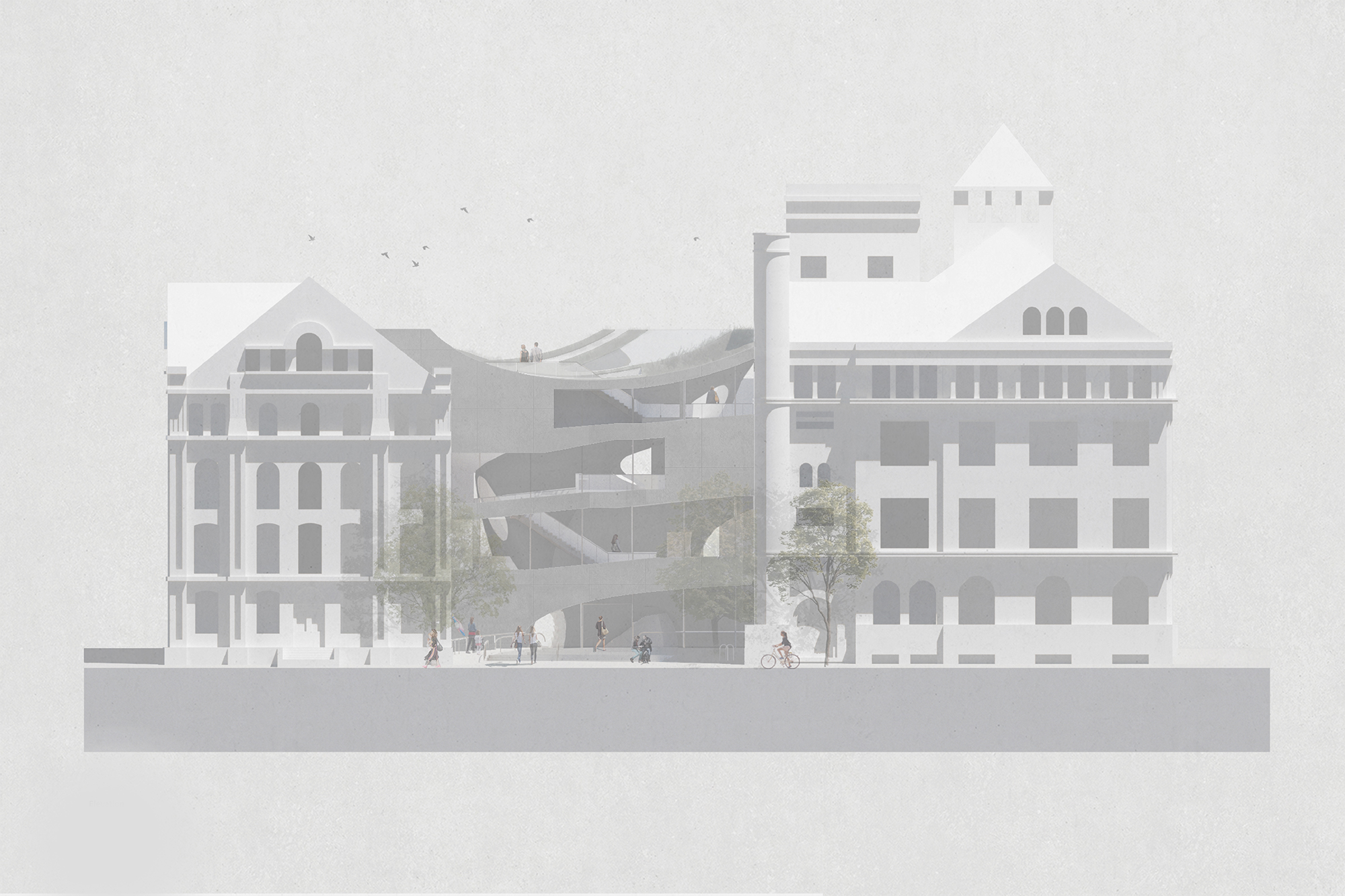
Front elevation of Elva's addition.
Inside, the cones would provide both circulation and program space. The building's basement level would contain an amphitheatre, with its terraced seating set into the slope of the structure's lowermost cone. On the main floor would be a reception area and café, where visitors could lounge in a semi-public setting.
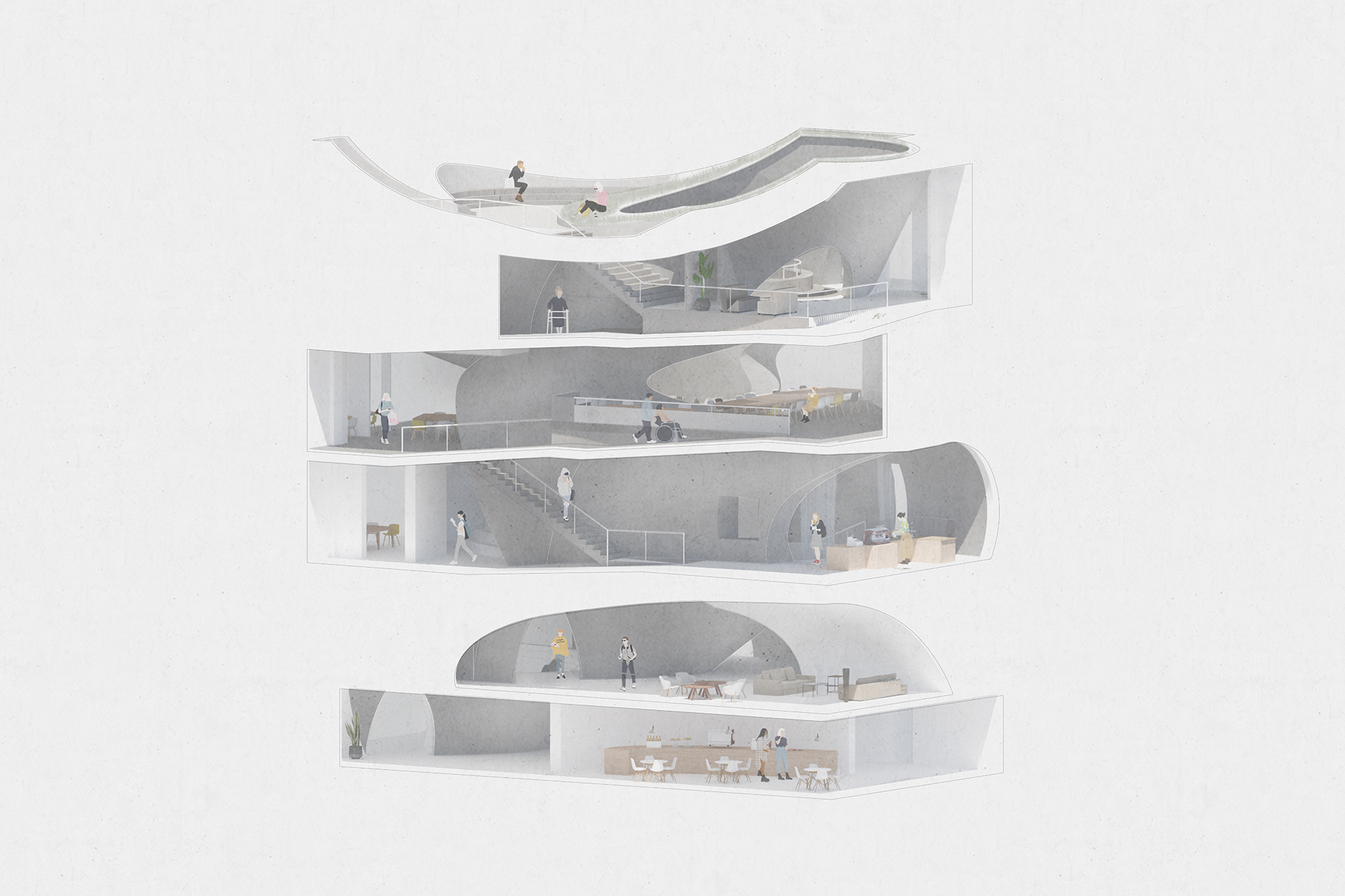
Illustration showing the addition's internal program spaces.
The upper floors would contain spaces intended exclusively for student use. A third-floor studio would exist in the open space surrounding a large, central conic volume. Openings in the side of the cone would allow students working in the studio space to look down into the core of the addition, or up towards a large skylight.
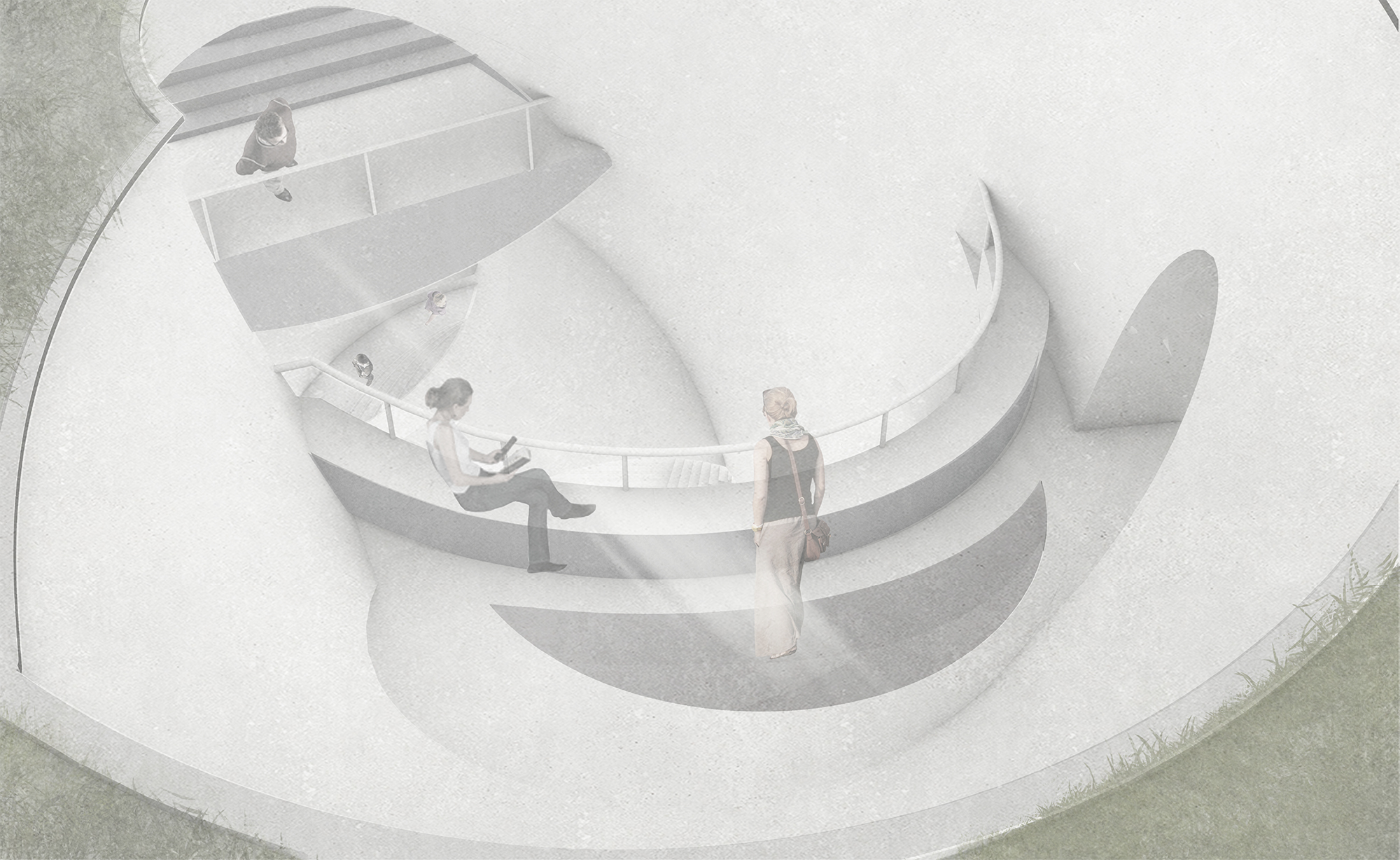
A student lounge area.
The fourth floor would be even more intimate and private, with a small amount of auditorium seating space near the central cone. Around the edges would be an enclosed computer lab and another studio space.
Elva also designed a rooftop garden, with more auditorium seating.
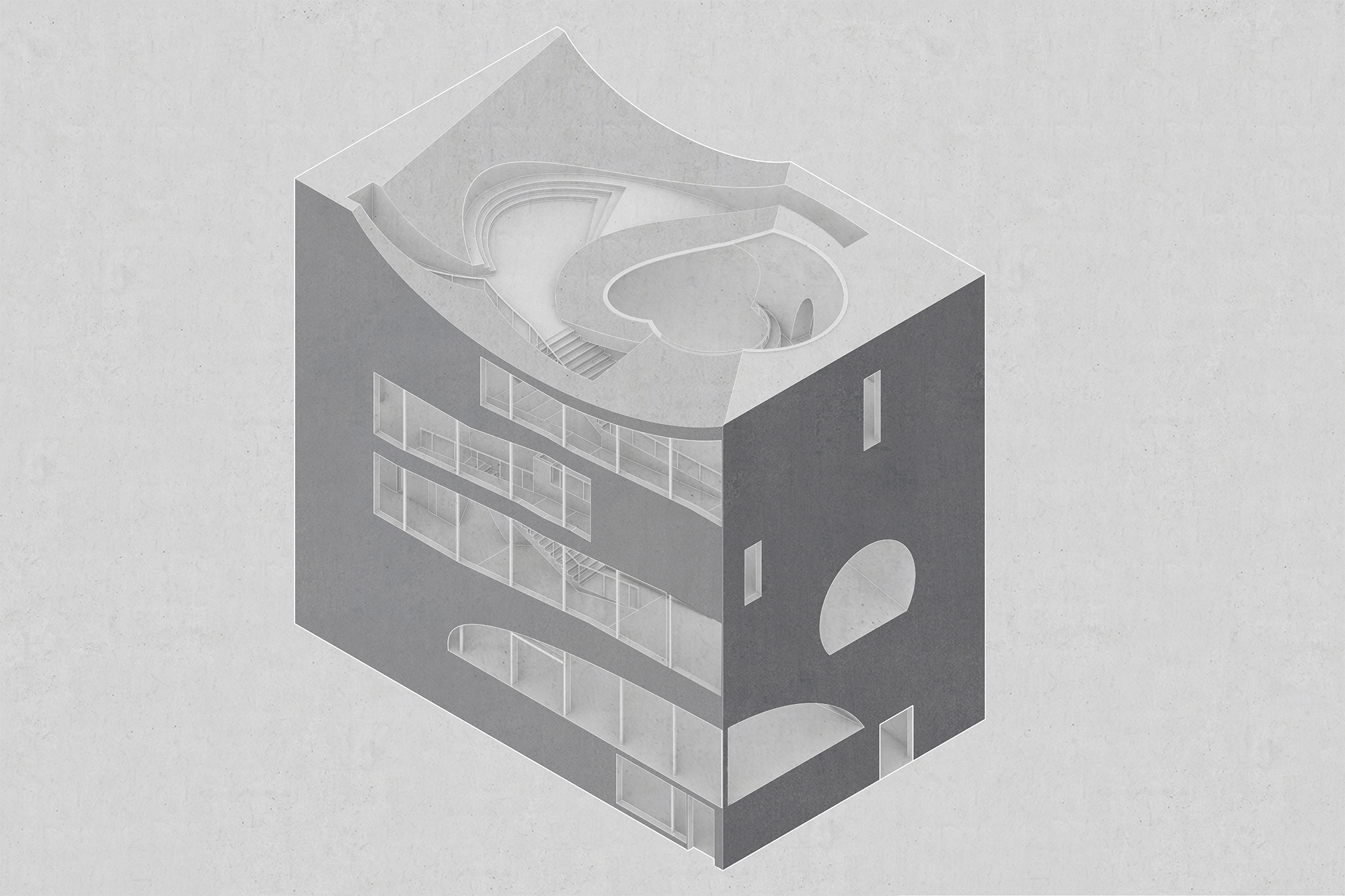
A view of the roof.
All of these levels would be linked by a carefully planned system of circulation. "There were lots of problems and limitations when it came to circulation," Elva says. "I needed to think about the user's experience, accessibility, and also deal with a difference in the floor heights of the two neighbouring buildings."
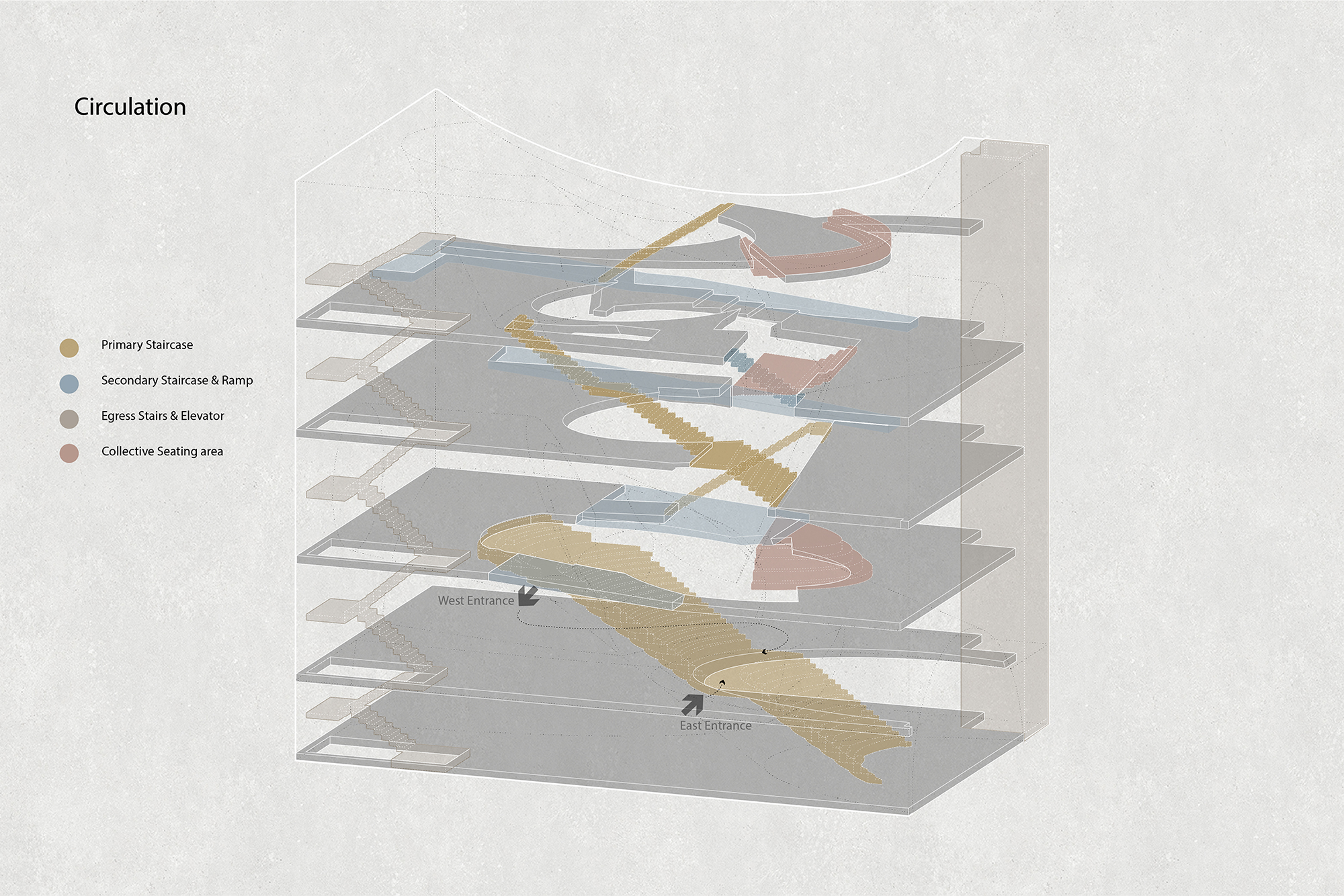
An illustration showing the addition's internal circulation. (Click to view a larger version.)
She resolved these problems by creating a few ways of moving between floors. A primary network of staircases would make for easy movement by people on foot, while those with mobility challenges could use a system of ramps (along with the building's elevator) to get around without too much interference.
Instructor: Miles Gertler

